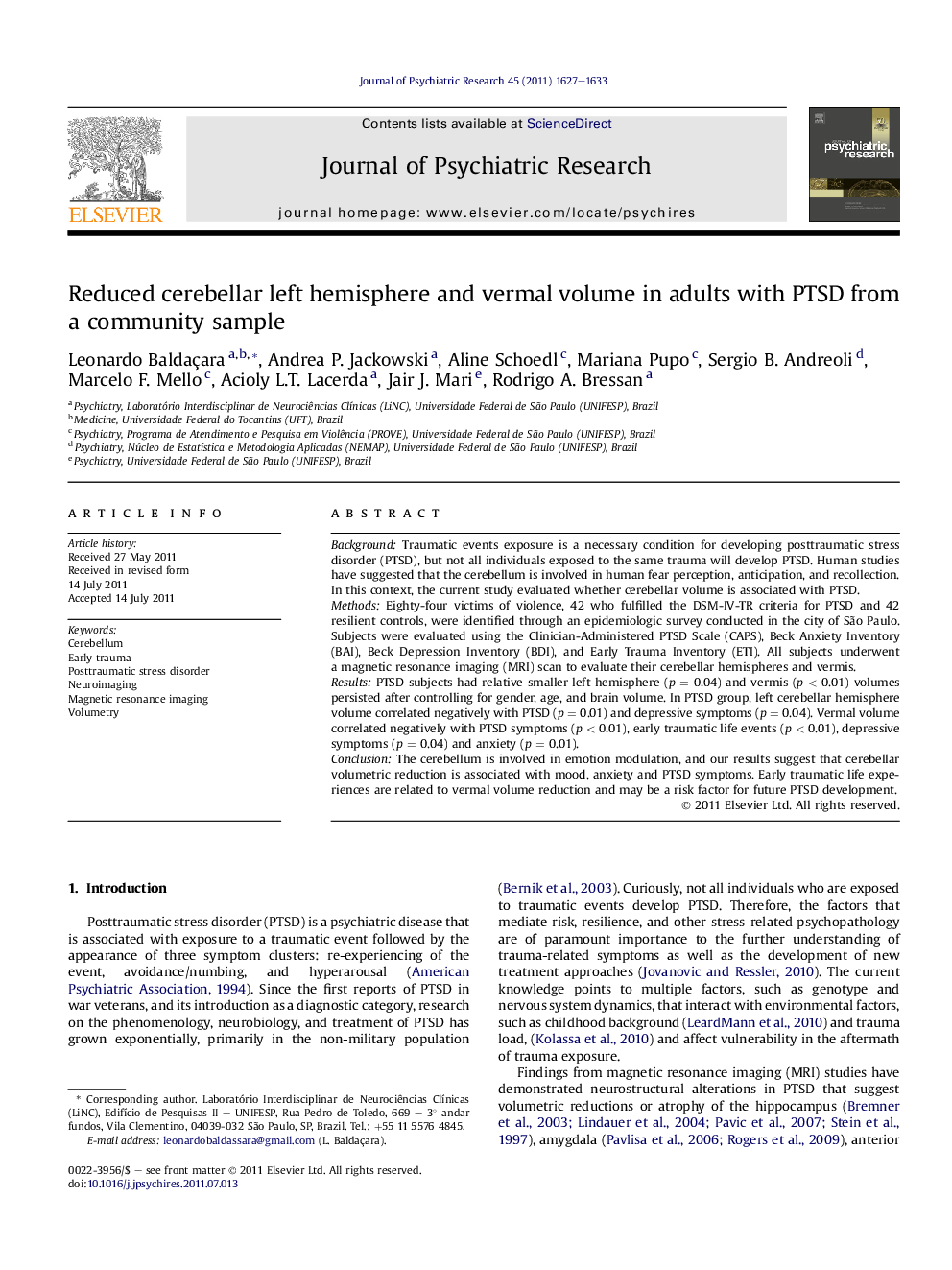| Article ID | Journal | Published Year | Pages | File Type |
|---|---|---|---|---|
| 327430 | Journal of Psychiatric Research | 2011 | 7 Pages |
BackgroundTraumatic events exposure is a necessary condition for developing posttraumatic stress disorder (PTSD), but not all individuals exposed to the same trauma will develop PTSD. Human studies have suggested that the cerebellum is involved in human fear perception, anticipation, and recollection. In this context, the current study evaluated whether cerebellar volume is associated with PTSD.MethodsEighty-four victims of violence, 42 who fulfilled the DSM-IV-TR criteria for PTSD and 42 resilient controls, were identified through an epidemiologic survey conducted in the city of São Paulo. Subjects were evaluated using the Clinician-Administered PTSD Scale (CAPS), Beck Anxiety Inventory (BAI), Beck Depression Inventory (BDI), and Early Trauma Inventory (ETI). All subjects underwent a magnetic resonance imaging (MRI) scan to evaluate their cerebellar hemispheres and vermis.ResultsPTSD subjects had relative smaller left hemisphere (p = 0.04) and vermis (p < 0.01) volumes persisted after controlling for gender, age, and brain volume. In PTSD group, left cerebellar hemisphere volume correlated negatively with PTSD (p = 0.01) and depressive symptoms (p = 0.04). Vermal volume correlated negatively with PTSD symptoms (p < 0.01), early traumatic life events (p < 0.01), depressive symptoms (p = 0.04) and anxiety (p = 0.01).ConclusionThe cerebellum is involved in emotion modulation, and our results suggest that cerebellar volumetric reduction is associated with mood, anxiety and PTSD symptoms. Early traumatic life experiences are related to vermal volume reduction and may be a risk factor for future PTSD development.
